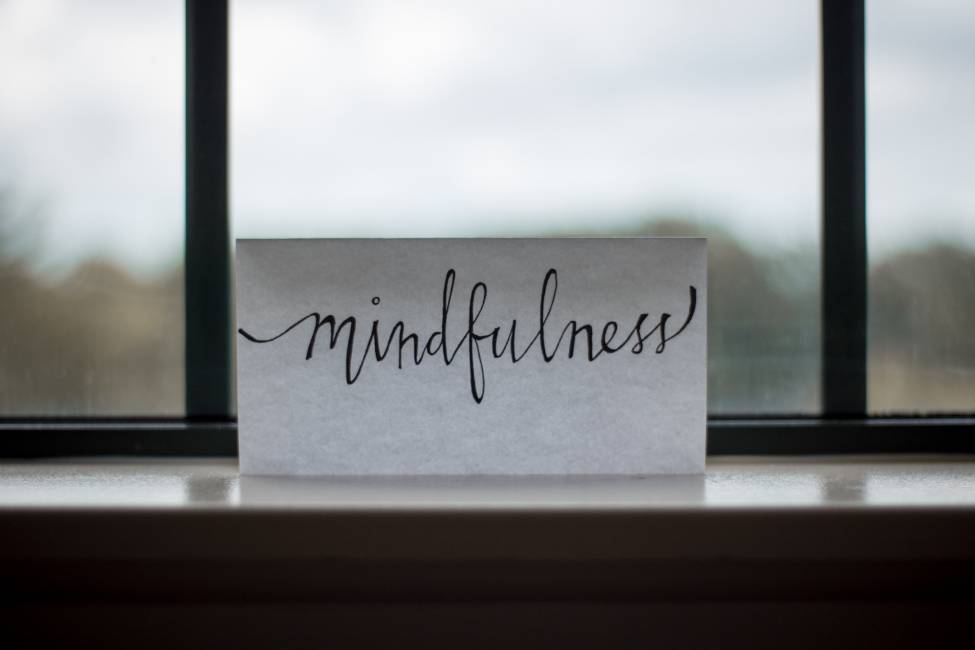Mindfulness: What’s it all About?
by Cassidy Brydon, FAU Senior | Thursday, May 30, 2019
Mindfulness is a common concept in popular culture and found in varied references to religion, yoga, self-care, and psychology. When I was first introduced to mindfulness, I thought it was great for other people and understood the benefits but I didn’t think it was for me, an avid overthinker. Now that I’ve tried mindfulness many times (and sometimes failed), I’ve realized its benefits definitely outweigh the initial awkwardness and it's really for everyone, especially overthinkers.
So, what is mindfulness? Mindfulness is most often known as a state of mind of “moment-to-moment awareness of one’s experience without judgment”1. This can be a pretty tall order in our achievement-oriented delayed-gratification rat race society. Fortunately, mindfulness can be cultivated as a practice, where people set aside time to intentionally experience life as moment-to-moment without judgment and allow thoughts to come and go without interaction. The key to understanding what mindfulness is is to remember that mindfulness is a non-judgemental flow of thought, awareness, and experience.
Research indicates that the more you practice mindfulness the more benefits you receive and the more likely you are to develop a more generally mindful approach to life2. Benefits of Mindfulness include3:
- Less overthinking
- Reduced stress
- Increased ability to remember and use information recently learned
- Increased ability to focus
- Increased ability to control your emotions
- Increased ability to switch focus quickly
- Increased relationship satisfaction
- Stronger immune system
Research suggests that these benefits will increase as general overall mindfulness increases due to more frequently being in a mindful state4. Along the same lines, research doesn’t really cite any sort of cost for practicing mindfulness, outside of time commitment. In all honesty, the idea of devoting 5 minutes a day to mindfulness seemed daunting to me. I didn’t know where I could find 5 minutes to just be; but, once I found the time and made the effort I started noticing that I was happier, healthier, and handling the rough stuff a lot better.
So you know what mindfulness is and that its good for you, but how does one practice mindfulness? Typically through meditation. To start practicing mindfulness, the best piece of advice I can give is to be kind to yourself when your try to meditate. Your mind will wander and you might not feel like you are doing mindfulness “right,” but it gets easier and part of mindfulness is not judging yourself and your thoughts. When I practice mindfulness, I like to have some calm music or white noise to assist me. You may also benefit from some guided meditation recordings when you first start off. Here is a short mindfulness practice to get you started:
- Find a comfortable place to sit: Find a place and time that feels calm, comfortable, and quiet to you.
- Set a time limit for your practice: Choose a time limit that you are comfortable with. Researchers and practitioners recommend 5 to 10 minutes when you are first starting out.
- Pay attention to your body: In your seated position, notice how you feel physically. What sensations are there in your body? Any tightness or relaxed areas? Other sensations?
- Focus on your breathing: Notice your breath as you inhale and exhale, but don’t try to control or change it. Just notice it.
- Notice if your mind wanders: If your mind wanders, take note, let it go, and return to focusing on your breathing.
Research demonstrates the benefits of mindfulness for the average person and those suffering from mental and physical issues. I find mindfulness to be helpful in everyday life and during extremely stressful time periods. If you want help getting started, there are many apps to choose from. Stay tuned for a future review of mindfulness apps.
Sources and Further Research
1 Davis PhD, D. M., Hayes, P., & Jeffrey, A. (2012). What are the benefits of mindfulness: A wealth of new research has explored this age old practice. Here’s a look at its benefits for both clients and psychologists. American Psychological Association, 43(7), 64.
2 Carmody, J., & Baer, R. A. (2008). Relationships between mindfulness practice and levels of mindfulness, medical and psychological symptoms and well-being in a mindfulness-based stress reduction program. Journal of behavioral medicine, 31(1), 23-33.
3 Davis PhD, D. M., Hayes, P., & Jeffrey, A. (2012). What are the benefits of mindfulness: A wealth of new research has explored this age old practice. Here’s a look at its benefits for both clients and psychologists. American Psychological Association, 43(7), 64.
4 Carmody, J., & Baer, R. A. (2008). Relationships between mindfulness practice and levels of mindfulness, medical and psychological symptoms and well-being in a mindfulness-based stress reduction program. Journal of behavioral medicine, 31(1), 23-33.